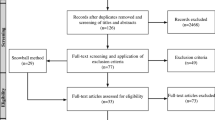Abstract
Many countries are facing a problem when the age-structure of the society is changing. The numbers of senior citizen are rising rapidly, and caretaking personnel numbers cannot match the problems and needs of these citizens. Using smart, ubiquitous technologies can offer ways in coping with the need of more nursing staff and the rising costs of taking care of senior citizens for the society. Helping senior citizens with a novel, easy to use interface that guides and helps, could improve their quality of living and make them participate more in daily activities. This paper presents a projection-based display system for elderly people with memory impairments and the proposed user interface for the system. The user’s process recognition based on a sensor network is also described. Elderly people wearing the system can interact the projected user interface by tapping physical surfaces (such as walls, tables, or doors) using them as a natural, haptic feedback input surface.








Similar content being viewed by others
References
Bao L, Intille SS (2004). Activity recognition from user-annotated acceleration data. In: Proceedings of pervasive 2004, LNCS 3001. pp 1–17
Björneby S, Topo P, Holthe T (eds) (1999) Technology, ethics and dementia: a guidebook on how to apply technology in dementia care. EU Biomed II project Technology, Ethics and Dementia TED. Norwegian Centre for Dementia Research, INFO banken, 64 p. ISBN 82-91054-62-2
Ferri P, Prince M, Brayne C, Brodaty H, Fratiglioni L, Ganguli M, Hall K, Hasegawa K, Hendrie H, Huang Y, Jorm A, Mathers C, Menezes PR, Rimmer E, Scazufca M (2005) Global prevalence of dementia: a Delphi consensus study. Lancet 366(9503):2112–2117
Karitsuka T, Sato K (2003) A wearable mixed reality with an on-board projector. In: 2nd IEEE and ACM international symposium on mixed and augmented reality (ISMAR), pp 321–322
Kelly CL, Charness N (1995) Issues in training older adults to use computers. Behav Inf Technol 14(2):107–120
Khan AM, Lee YK, Lee S, Kim TS (2010) Accelerometer’s position independent physical activity recognition system for long-term activity monitoring in the elderly. Med Biol Eng Comput 48:1271–1279
Kurata T, Sakata N, Kourogi M, Okuma T, Ohta Y (2008) Interaction using nearby and far projection surfaces with a body worn ProCam system. In: Proceedings of the engineering reality of virtual reality, the 20th annual IS&T/SPIE symposium on electronic imaging (EI 2008), pp 6804–6816
Mistry P, Maes P, Chang L (2009) WUW–Wear Ur World–A wearable gestural interface. CHI 2009. ACM SIGCHI. Boston, USA
Niemelä K, Salminen K (2009) Kansallisten eläkestrategioiden muotoutuminen ja Euroopan unionin avoin koordinaatiomenetelmä (in Finnish, English summary). Sosiaali- ja terveysturvan tutkimuksia No. 104. Sastamala: Vammalan Kirjapaino Oy, s. 114–136
Ohmura R, Naya F, Noma H, Kogure K (2006). B-pack: a bluetooth-based wearable sensing device for nursing activity recognition. In: Proceedings of 1st international symposium on wireless pervasive computing
Parkkinen P. (2007) Riittääkö työvoima sosiaali- ja terveyspalveluihin.(in Finnish, English summary). VATT discussion papers 433. Government Institute for Economic Research, Oy Nord Print Ab
Pirttikangas S, Fujinami K, Nakajima T (2006). Feature selection and activity recognition from wearable sensors. In: Proceedings of UCS2006, Seoul, Korea, 11–13 Oct 2006, pp 516–527
Pouke M, Honkanen R (2011) Comparison of nearest neighbour and neural network based classifications of patient’s activity. Proc. PervaSense 2011
Pouke M, Hickey S, Kuroda T, Noma H (2010) Activity recognition of the elderly. In: Proceedings of CASEMANS 2010. ACM. 7 p
STAKES (2008) Apuvälineet ja Dementia Pohjoismaissa (in Finnish). [Web-document] http://www.stakes.fi/verkkojulkaisut/muut/M267.pdf
Statistical Handbook of Japan (2007) Statistical research and training institute, MIC [Web-document] Available: http://www.stat.go.jp/english/data/handbook/c15cont.htm
Tilastokeskus (2007) Väestöennuste 2007–2040 (in Finnish). [Web-document] Available: httpwww.stat.fi/til/vaenn/2007/vaenn_2007_2007-05-31_tie_001.html
Yamamoto G, Sato K (2007) PALMbit a palm interface with projector-camera system. In: Proceedings of Ubicomp 2007, Innsbruck, Austria, 16–19 Sept 2007, pp 276–279
Acknowledgments
This work has been partly funded by the Academy of Finland and JSPS (Japan) under Smart Living Environment for Senior Citizen research projects (VESC, P-SESC).
Author information
Authors and Affiliations
Corresponding author
Rights and permissions
About this article
Cite this article
Pulli, P., Hyry, J., Pouke, M. et al. User interaction in smart ambient environment targeted for senior citizen. Med Biol Eng Comput 50, 1119–1126 (2012). https://doi.org/10.1007/s11517-012-0906-8
Received:
Accepted:
Published:
Issue Date:
DOI: https://doi.org/10.1007/s11517-012-0906-8




